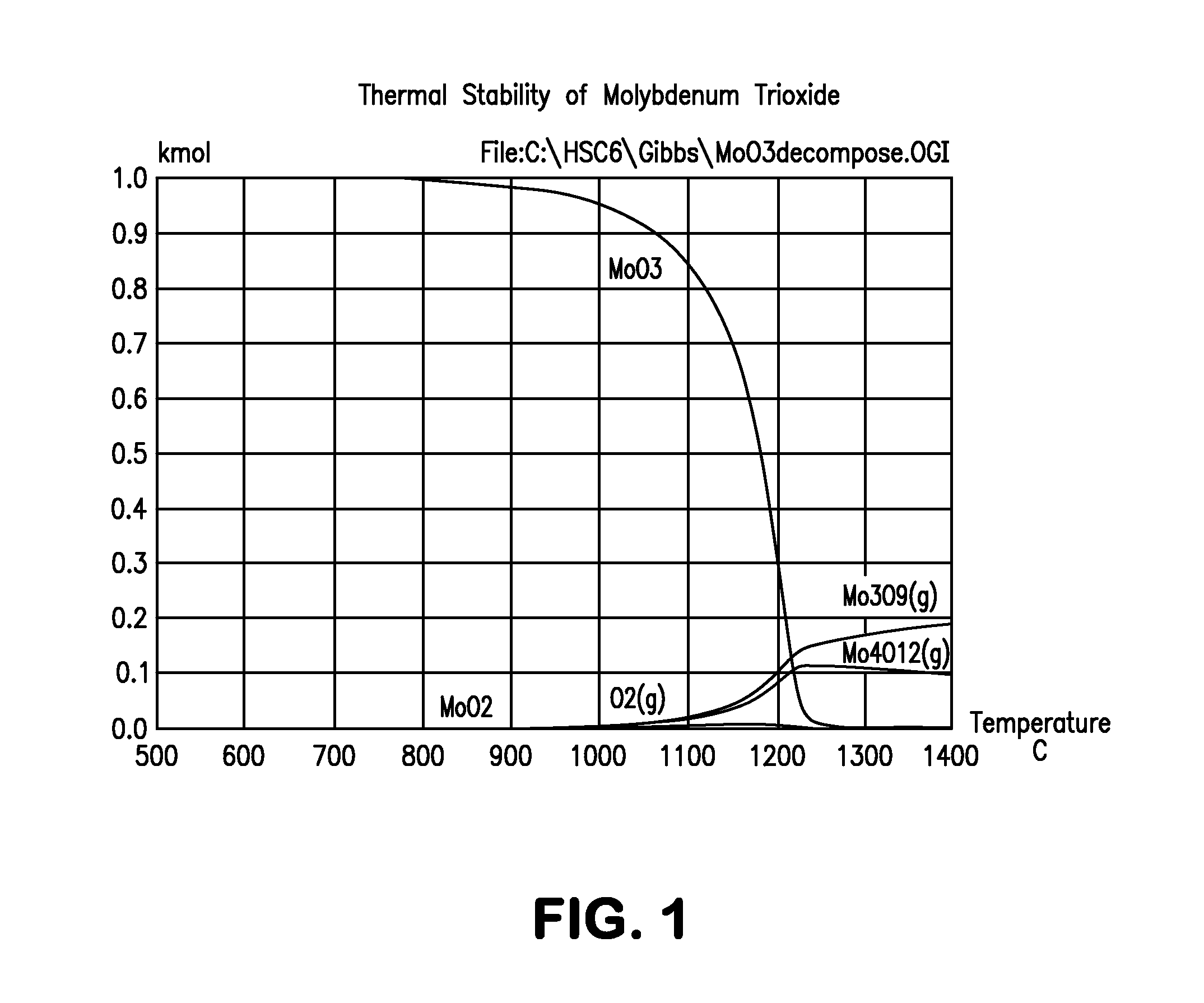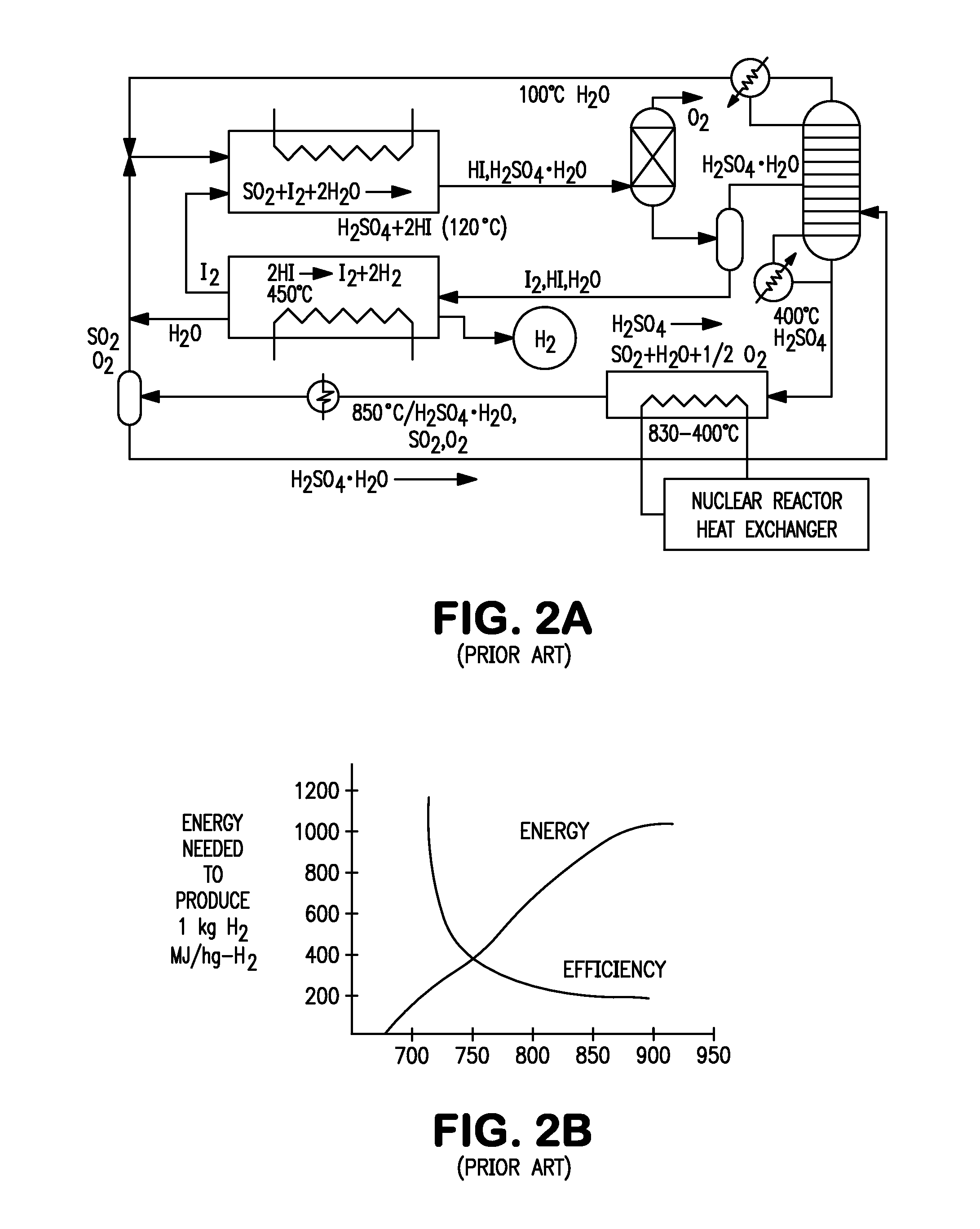Production of hydrogen through oxidation of metal sulfides
a technology of metal sulfide and hydrogen, which is applied in the direction of chromium oxide/hydrate, tin oxide, niobium compounds, etc., can solve the problems of unavoidable nitrogen oxide formation, detrimental to efficiency, economic and environmental benefits, and achieve process efficiency and environmental benefits. , the effect of energy efficiency
- Summary
- Abstract
- Description
- Claims
- Application Information
AI Technical Summary
Benefits of technology
Problems solved by technology
Method used
Image
Examples
example
[0030]An example of a test version of the looping oxidation portion of the process to convert molybdenum oxide and sulfur dioxide was performed as follows: The equipment was essentially as in FIG. 3B. MoO3 of the following composition, wgt-% (Mo-63.8, Cu-0.21, C-0.01, S-0.01, Pb-0.01, P-0.01) and MoS2 of the following composition, wgt-% (Mo-59.5, Cu-0.05, Fe-0.14, Pb-0.01, Insol.-0.4, MoO3-0.017, H2O-0.0, Oil-0.02, MoS2-99.20) were screened to minus 20 mesh and were mixed in a ratio of 11b (0.453 kg) MoS2 to 5.94 lb (2.7 kg) MoO3 to achieve a 10% excess stoichiometric amount of MoO3. The material was fed into the 5-in. (127-mm) diameter 45 in. (1.14 m) long indirectly fired screw roaster (furnace 20). Nitrogen at a rate of 0.35 sft3 / min (9.91 / min) was fed counter currently as a sweep gas to remove the evolving SO2. Any entrained fines in the sweep gas were filtered out in a downstream baghouse.
[0031]The feeding-in rate was metered at 10 lb / h with a separate feed screw 2 in. (51 mm) ...
PUM
| Property | Measurement | Unit |
|---|---|---|
| temperatures | aaaaa | aaaaa |
| temperatures | aaaaa | aaaaa |
| temperatures | aaaaa | aaaaa |
Abstract
Description
Claims
Application Information
 Login to View More
Login to View More - R&D
- Intellectual Property
- Life Sciences
- Materials
- Tech Scout
- Unparalleled Data Quality
- Higher Quality Content
- 60% Fewer Hallucinations
Browse by: Latest US Patents, China's latest patents, Technical Efficacy Thesaurus, Application Domain, Technology Topic, Popular Technical Reports.
© 2025 PatSnap. All rights reserved.Legal|Privacy policy|Modern Slavery Act Transparency Statement|Sitemap|About US| Contact US: help@patsnap.com



